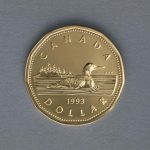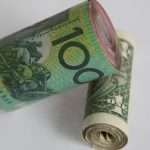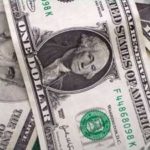US dollar climbed to highs unseen in five years against the Japanese yen on trading Monday on optimism that an ongoing economic recovery in the United States may urge the Federal Reserve Bank to continue tapering its monthly monetary stimulus and probably exit the program by the end of 2014.
USD/JPY touched a session high at 105.42 at 1:45 GMT, also the pairs highest point since October 1st 2008, after which consolidation followed at 105.35, gaining 0.17% for the day. Support was likely to be found at December 27th low, 104.65, while resistance was to be encountered at October 1st 2008 high, 106.52.
The Federal Reserve Bank said on December 18th that it intends to reduce its monthly bond purchases in January to $75 billion from $85 billion, while also reinforcing its position that the benchmark interest rate will remain low for an extended period of time. Bank’s policymakers will probably trim asset purchases in increments of $10 billion over the next seven meetings before ending the program in December 2014.
Later in the day the National Association of Realtor’s (NAR) will publish data regarding pending home sales in the United States, an indicator for future housing market activity. The corresponding index probably rose 1.0% in November compared to October, according to the median estimate of experts. In October compared to September pending home sales decreased 0.6%. Better than projected sales in November will certainly provide support to greenback’s demand.
In addition, the Institute for Supply Management (ISM) may report on January 2nd that its manufacturing PMI for the United States came in at a reading of 56.9 in December, after in November the index climbed at the fastest pace in more than two years, reaching 57.3.
Meanwhile, the Japanese currency was set for a yearly retreat against most of its major peers, as Asian shares recorded gains, which reduced demand for safe haven currencies such as the yen. The MSCI Asia Pacific Index of stocks rose 0.3%, extending this year’s advance to 8.8%.
Bank of Japan policymakers kept their pledge to increase the monetary base by an annual 60 trillion to 70 trillion JPY (665 billion USD) at the policy meeting this month, as the bank strives to achieve its target of a 2% inflation rate. The minutes of BoJ’s November policy meeting, released last week, revealed that not all board members were confident that nations economic growth was on a long-term upward trend.
“The yen continues to weaken as the market senses a difference in monetary policy direction between the U.S. and Japan,” said Daisaku Ueno, the chief currency strategist at Mitsubishi UFJ Morgan Stanley Securities Co. in Tokyo, cited by Bloomberg. “The fact that stock markets continue to rise also helps weigh on the yen.”
Elsewhere, the Japanese yen was losing ground against the euro and the sterling. EUR/JPY cross was up 0.14% on a daily basis to trade at 144.74 at 9:22 GMT, while GBP/JPY pair rose 0.18% to trade at 173.59 at 9:22 GMT. The US dollar has appreciated 4.1% during this year against nine other developed-nation currencies, which are tracked by the Bloomberg Correlation-Weighted Index. The euro has risen 8.9%, demonstrating the best performance within the group, while the Japanese yen has declined the most, or by 16% during the same period.





